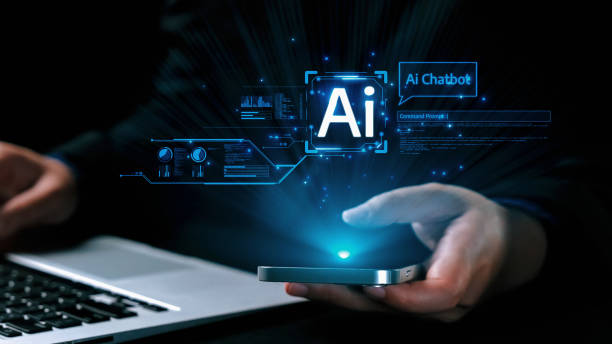What is an AI Robot and What are its Applications?
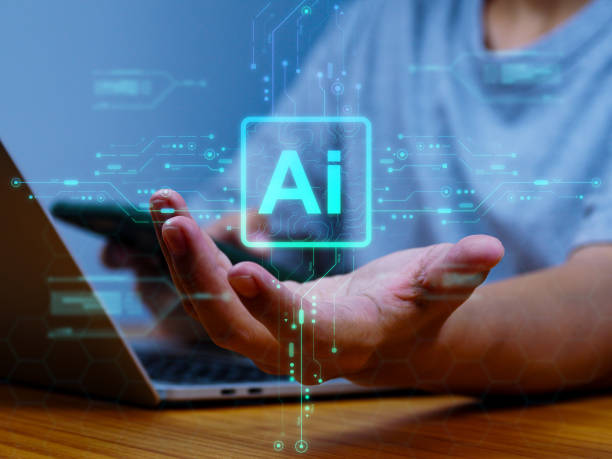
#AI Robot is a combination of two powerful fields: #Artificial_Intelligence and #Robotics.
Simply put, an AI robot is a physical machine that, using artificial intelligence algorithms, is capable of performing tasks that traditionally require human intelligence.
These tasks can include learning, reasoning, problem-solving, perception, and interaction with the environment.
AI robots are used in various industries including manufacturing, healthcare, customer service, agriculture, and even entertainment.
For example, in factory production lines, intelligent robots can perform repetitive and dangerous tasks with high precision and speed.
In hospitals, surgical robots with microscopic precision assist doctors in complex operations.
AI robots have created a huge transformation in our lives.
Some of the key applications of AI robots include:
- Industrial Automation Increasing productivity and reducing costs.
- Customer Service Providing quick and accurate answers to customer questions.
- Healthcare Assisting surgeons and caring for patients.
- Agriculture Managing farms and harvesting crops.
- Search and Rescue Finding lost people in difficult conditions.
In fact, wherever there is a need for complex and intelligent tasks, AI robots can offer an efficient and effective solution.
Ongoing advancements in artificial intelligence and robotics promise a future where intelligent robots will play a more prominent role in our lives.
AI robots have the potential to revolutionize various industries and make life easier for humans.
Tired of losing business opportunities due to not having a professional corporate website? Worry no more! With Rasaweb’s corporate website design services:
✅ Your brand’s credibility and professionalism will increase.
✅ You will attract more customers and sales leads.
⚡ Get a free consultation now to start!
Main Components of an AI Robot

An AI robot consists of several main components, each responsible for a specific task.
These components include:
- Sensors The robot interacts with its environment through sensors.
Sensors can include cameras, microphones, temperature, pressure, and proximity sensors.
These sensors collect the necessary information for understanding the environment and performing tasks. - Processor This is the robot’s thinking brain, which processes information received from the sensors and makes necessary decisions.
The processor is usually a powerful computer capable of executing complex AI algorithms. - Motors and Actuators These components allow the robot to move and physically interact with the environment.
Motors can be used to move arms, legs, wheels, and other parts of the robot.
Actuators are also tools that the robot uses to perform specific tasks such as grasping objects or pressing buttons. - AI Software Includes machine learning algorithms and models that enable the robot to learn, reason, and make decisions.
This software determines how the robot responds to information received from sensors and how it performs its tasks. - Power Source This is the battery or external power supply that provides the energy required for the robot’s operation.
The combination of these components enables an AI robot to perform complex and diverse tasks.
AI robot technology is constantly evolving, and with technological advancements, its components are also improving.
Machine Learning and its Role in AI Robots
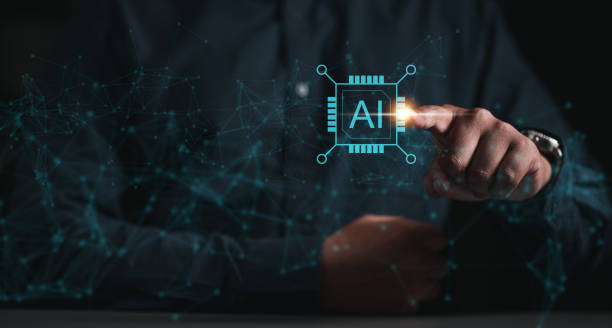
#Machine_Learning is one of the most important branches of #Artificial_Intelligence, playing a vital role in the performance of #AI_Robots.
Machine learning allows robots to learn from experience and data, improving their performance without explicit programming.
In other words, robots use machine learning algorithms to identify patterns and relationships in data and use them for future decision-making.
An AI robot can operate effectively in complex and unpredictable environments with the help of machine learning.
There are different types of machine learning algorithms used in robotics:
- Supervised Learning The robot is trained using labeled data.
- Unsupervised Learning The robot finds patterns in data without using labeled data.
- Reinforcement Learning The robot learns through interaction with the environment and receiving rewards and penalties.
For example, a robot designed to navigate an unfamiliar environment can use reinforcement learning to learn the best paths and avoid obstacles.
With each attempt to move, the robot receives feedback on whether the chosen path was successful or not.
Over time, the robot learns which paths are safe and efficient.
An AI robot, leveraging machine learning, is capable of adapting to new conditions and improving its performance over time.
| Machine Learning Algorithm | Application in Robotics |
|---|---|
| Neural Networks | Image recognition, motion control |
| Support Vector Machines | Object classification, pattern recognition |
| Decision Trees | Decision making, planning |
Challenges and Limitations of AI Robots

Despite significant advancements in the field of AI robots, there are still challenges and limitations that hinder their widespread application in some areas.
One of the most important challenges is the high cost of developing and implementing intelligent robots.
Designing, building, and training these robots requires various specializations and significant time and resources.
AI robots require substantial investment.
Some other challenges and limitations include:
- Technical Limitations Robots still face difficulties in understanding and interpreting the complexities of the real world.
- Ethical Issues The use of robots in some areas has raised ethical concerns.
- Security Concerns Robots can be vulnerable to cyberattacks and misuse.
- Legal Limitations Laws and regulations regarding the use of robots have not yet been established in many countries.
For example, autonomous driving is one area that faces many challenges.
Self-driving robots must be able to understand and predict the behavior of other drivers, pedestrians, and various weather conditions.
Also, in the event of an accident, who will be legally responsible? These are questions for which there are no definitive answers yet.
Despite its high potential, AI robot technology requires careful consideration and resolution of existing challenges.
Do you have an online store, but your sales aren’t what you expected? Rasaweb, with its professional e-commerce website design, solves your problem forever!
✅ Significant increase in conversion rates and sales
✅ Exceptional user experience for your customers
⚡ Click here to get a free consultation with Rasaweb!
The Future of AI Robots

The future of AI robots appears very bright and promising.
Rapid advancements in artificial intelligence, machine learning, and robotics promise the emergence of smarter, more efficient, and more capable robots.
It is expected that in the near future, robots will play a more prominent role in our lives and bring about massive transformations in various industries.
AI robot technology is entering new domains of our lives.
Some of the key trends shaping the future of AI robots include:
- Increased Cognitive Capabilities Robots will be able to better understand natural language, recognize faces and emotions, and solve complex problems.
- Improved Motor Skills Robots will be capable of more precise, delicate, and coordinated movements.
- Expanded Applications Robots will be employed in new fields such as education, elder care, and space exploration.
- Human-Robot Collaboration Robots will be utilized as intelligent collaborators alongside humans.
For example, in the future, we may see nursing robots caring for the elderly in homes, teacher robots assisting students in learning lessons, and astronaut robots exploring other planets.
AI robot technology has the potential to significantly improve our lives.
Types of AI Robots

AI robots are designed and built in various types, each suitable for specific applications.
This diversity in design and functionality allows for the use of AI robots across a wide range of industries and activities.
AI robots exist in various shapes and sizes.
Some common types of AI robots include:
- Industrial Robots Used for automating production processes in factories.
- Service Robots Used for providing various services to humans in home, office, and commercial environments.
- Medical Robots Used to assist doctors in performing surgeries, diagnosing diseases, and caring for patients.
- Military Robots Used for performing dangerous and difficult tasks on the battlefield.
- Educational Robots Used for teaching various concepts to students.
For example, industrial robots typically consist of robotic arms capable of precise and repetitive movements.
Service robots can be designed in humanoid or animal-like forms and perform tasks such as cleaning, food delivery, and childcare.
Medical robots can assist surgeons in performing complex operations with high precision.
AI robots are designed and built according to the specific needs of each application.
Difference Between AI Robot and Ordinary Robot
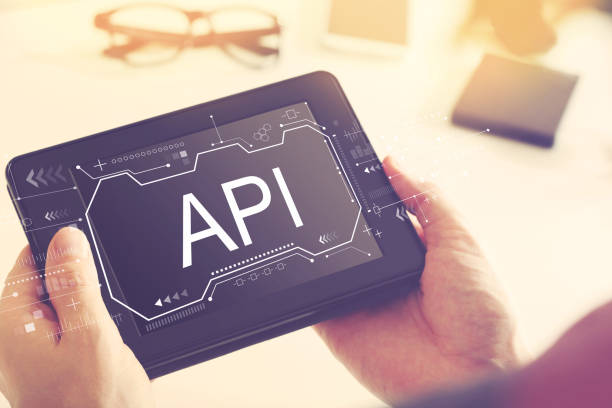
The main difference between an #AI_Robot and an #Ordinary_Robot lies in their level of intelligence and autonomy.
Ordinary robots are usually pre-programmed to perform a specific set of tasks repeatedly.
They are not capable of learning, adapting to new conditions, or making independent decisions.
In contrast, AI robots, using artificial intelligence algorithms, are capable of learning, reasoning, problem-solving, and decision-making.
An AI robot can operate effectively in complex and unpredictable environments.
| Feature | Ordinary Robot | AI Robot |
|---|---|---|
| Intelligence | Limited | High |
| Learning | No | Yes |
| Decision-making | No | Yes |
| Adaptability | Limited | High |
For example, an ordinary robot designed for welding car parts on a production line can only perform a specific series of welding movements.
In contrast, an AI robot can use sensors to detect the position of parts and automatically adjust its welding movements.
An AI robot offers greater flexibility and efficiency than an ordinary robot.
Development of AI Robots in Iran

The development of #AI_Robots in Iran has also seen significant progress in recent years.
Iranian researchers and companies are designing and building intelligent robots for various applications, including industry, healthcare, and agriculture.
AI robot technology in Iran is becoming a growing industry.
Some of the key areas of AI robot development in Iran include:
- Industrial Robots For automating production lines and increasing productivity.
- Agricultural Robots For farm management and increasing agricultural output.
- Medical Robots For assisting doctors in performing surgeries and diagnosing diseases.
- Educational Robots For teaching various concepts to students.
For example, in the field of industrial robots, Iranian companies are designing and building robots capable of performing tasks such as welding, painting, and assembling parts with high precision.
In the field of agricultural robots, robots have been designed that can detect weeds, water plants, and harvest crops automatically.
AI robot technology in Iran has the potential to contribute to the country’s economic and social development.
Does your current corporate website not reflect your brand’s credibility and strength as it should? Rasaweb solves this challenge for you with professional corporate website design.
✅ Increase visitor credibility and trust
✅ Targeted attraction of more customers
⚡ Click here for a free consultation!
Key Considerations in Choosing an AI Robot
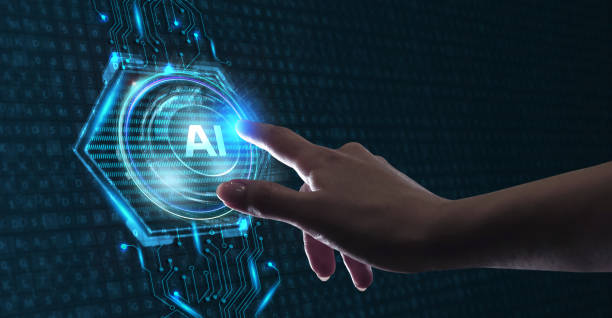
Choosing the right #AI_Robot for a specific application requires attention to key considerations.
First and foremost, you must precisely define your needs.
What tasks do you want the robot to perform? What features are important to you? Answering these questions will help you make a better choice.
The AI robot must be suitable for your needs.
Some key considerations to keep in mind when choosing an AI robot include:
- Capabilities The robot must be capable of performing the tasks you expect from it.
- Price The robot must be compatible with your budget.
- Support The manufacturer must provide appropriate support services.
- Upgradeability The robot should be upgradeable so you can use its new features in the future.
- Security The robot must have sufficient security to prevent misuse.
For example, if you are looking for an industrial robot for welding car parts, you should choose a robot with high precision, appropriate speed, and the ability to operate in harsh conditions.
Additionally, you should ensure that the manufacturer provides support services so that you can quickly resolve any issues that may arise.
The chosen AI robot should help you achieve your goals.
Career Future Related to AI Robots
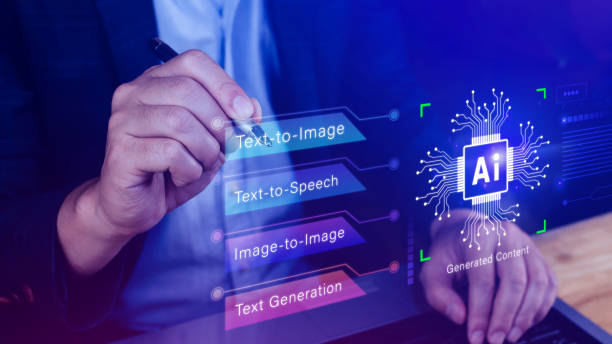
With the expanding use of #AI_Robots in various industries, new job opportunities will also be created.
Specialists in fields such as artificial intelligence, robotics, machine learning, and software engineering will be in high demand.
AI robot technology is paving the way for new jobs.
Some jobs related to AI robots include:
- Robotics Engineer Designing, building, and maintaining robots.
- AI Specialist Developing AI algorithms and models.
- Data Scientist Collecting, analyzing data to train robots.
- Robotics Technician Repairing and maintaining robots.
- Robot Sales Expert Selling and marketing robots.
For example, robotics engineers can work in manufacturing companies, robotic service companies, and research centers.
AI specialists can work in technology companies, consulting firms, and universities.
AI robot technology requires trained professionals to serve humans effectively.
Frequently Asked Questions
| Question | Answer |
|---|---|
| What is an AI robot? | It is a robot that uses artificial intelligence capabilities to understand the environment, reason, learn, and make decisions to perform complex tasks independently. |
| What is the main difference between an ordinary robot and an AI robot? | AI robots can learn and adapt to their environment, while ordinary robots typically operate based on fixed and predetermined programming. |
| In what fields are AI robots used? | In fields such as industry (production lines), medicine (robotic surgery), services (customer support, smart vacuum cleaners), exploration (space and underwater), and entertainment. |
| How do AI robots learn? | They acquire new skills by analyzing large datasets and identifying patterns through machine learning and deep learning algorithms. |
| Can AI robots have emotions? | Currently, no. They can identify or simulate emotions, but they do not experience actual emotions like humans. |
| What are the main advantages of using AI robots? | Increased productivity, reduced human error, performance of dangerous or repetitive tasks, and provision of innovative and efficient services. |
| What challenges exist in the development of AI robots? | The need for abundant and high-quality data, complexity of algorithms, ethical issues, cybersecurity, and high research and development costs. |
| Are AI robots dangerous for humans? | No, not if safe design principles and ethical regulations are followed. Concerns are mostly related to social and economic impacts such as changes in the job market. |
| What is an example of an AI robot in daily life? | Smart robotic vacuum cleaners (like Roomba) that automatically map and clean homes, or smart voice assistants (like Siri and Alexa). |
| How is the future of AI robots predicted? | They are expected to become smarter, more autonomous, and capable of more complex interactions with humans, playing a more prominent role in industry, medicine, transportation, and daily life. |
And other advertising services from Rasaweb Advertising Agency:
- Smart Sales Automation: A fast and efficient solution for online growth focusing on marketing automation.
- Smart SEO: An effective tool for customer acquisition using real data.
- Smart Sales Automation: Revolutionize online growth with custom programming.
- Smart Brand Identity: A professional solution for campaign management focusing on SEO-driven content strategy.
- Smart Advertorial: An innovative service for increasing digital branding through custom programming.
And over hundreds of other services in internet advertising, advertising consultation, and organizational solutions.
Internet Advertising | Advertising Strategy | Advertorial
References
Complete Guide to Building an AI Robot
Basics of Artificial Intelligence and its Applications
Future Trends in AI and Robotics
AI Project Ideas for Students
❓With Rasaweb Afarin, have a powerful presence in the digital world! From professional corporate website design to SEO optimization and social media management, we are your comprehensive digital marketing solution.
📍 Tehran, Mirdamad Street, next to Bank Markazi, Kazeroun Jonoubi Alley, Ramin Alley, No. 6

